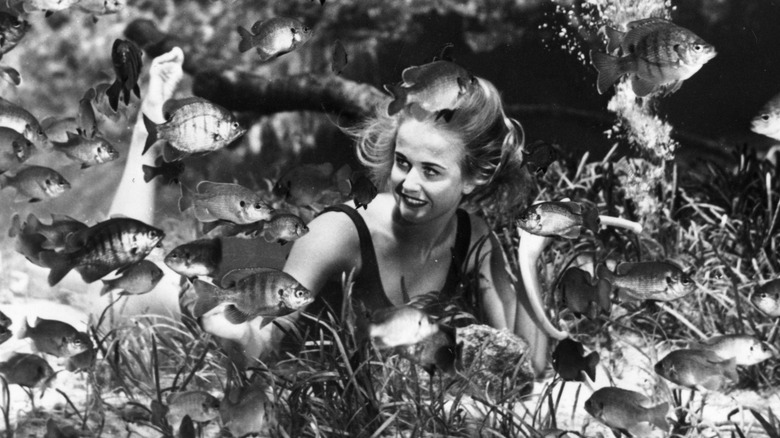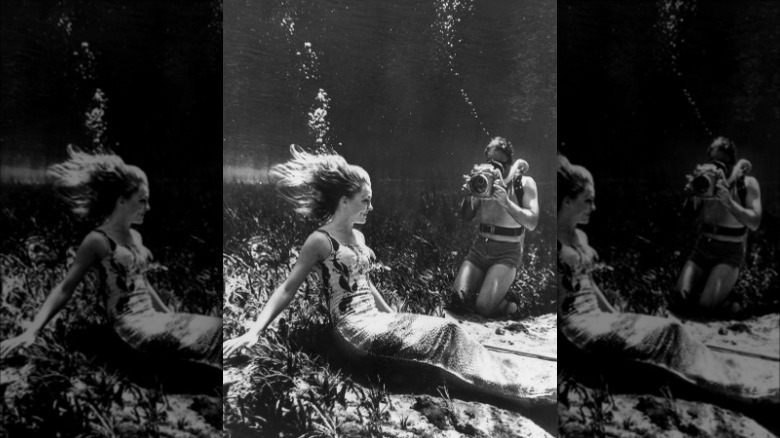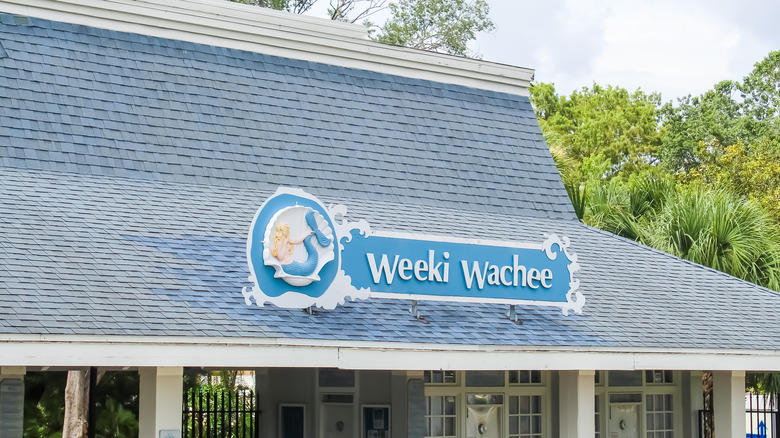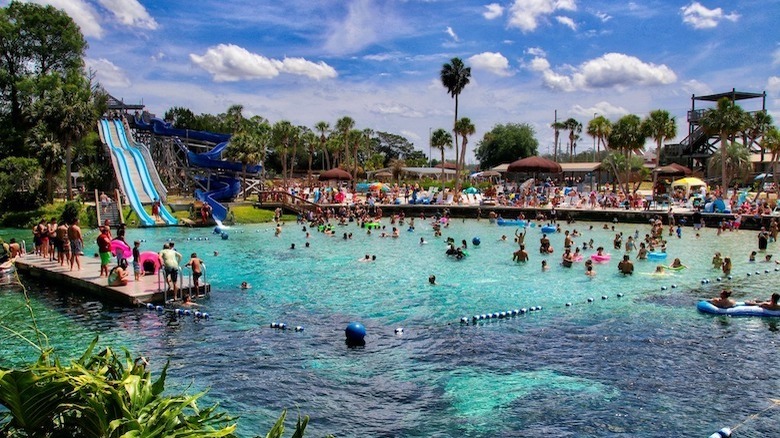The Whole Family Will Get A Kick Out Of The Mermaid Show In Spring Hill, Florida
Long before major interstates like I-95, I-75, and I-4 made it easy to criss-cross the state of Florida by car, even the roads considered primary thoroughfares were mostly two-lane highways connecting one small town to the next, with each community beckoning tourists to stop and drop a few bucks while passing through to grab a bite or maybe take in a show. So began the era of Florida's iconic roadside attractions. The quirky tourist traps, now fondly recalled as vintage old Florida enterprises, ranged from seashell shops and alligator wranglers to glass-bottom boat tours and synchronized water-skiing shows. "Anything could be turned into a roadside attraction, like a barn or a shack," James Zacharias, senior curator of education and history at the Museum of Arts & Sciences in Daytona Beach, Florida, told The Florida Times-Union in 2022. "It was usually based on natural attractions, like alligators and snakes."
In the late 1940s, Newton Perry, a World War II veteran who had served as a frogman in the U.S. Navy, saw an opportunity and decided to hop on the get-rich-maybe bandwagon. He had an idea and a location in mind — a series of natural springs emanating from the Floridan aquifer system (via Florida State Parks) that bubbled up in Hernando County, Florida.
The early days
Drawing on his experience as a Navy frogman and inspired by the natural springs (with perhaps a little Esther Williams thrown into the mix), Newton Perry came up with a fantastical idea: He would build an underwater theater and produce live mermaid shows. With a population of just 6,693 in 1950 (via Florida Census) and its prime location on U.S. 19, a mid-century U.S. highway connecting Erie, Pennsylvania to St. Petersburg, Florida (via US Ends), Hernando County had everything Perry needed to make his dream a reality. But he faced a few challenges along the way.
According to Weeki Fresh Water Adventures, the springs Perry probably envisioned as pristine had become a dumping ground for abandoned cars and household appliances. Once he got the detritus cleared, he had to come up with a way for his human mermaids to breathe underwater. The solution: free-flowing air hoses connected to a compressor (via Authentic Florida). The next step involved digging deep into the limestone surrounding the springs to build a subterranean theater where the audience could directly view the underwater performances. With the infrastructure in place, Perry started recruiting performers — who could swim.
The day Elvis stopped by
The first performance of the Weeki Wachee Springs Mermaid Show happened on October 13, 1947 (via The Florida Historical Society) — to little fanfare. Although Newton Perry's chosen location on U.S. 19 placed the attraction on one of Florida's main thoroughfares at the time, it was still a relatively low-traffic road. According to Weeki Fresh Water Adventures, Perry's performers ran out to the entrance when they heard a car passing and beckoned the driver to come in for the show.
By the 1950s, though, Weeki Wachee had become one of the country's most popular roadside attractions, even inspiring movies like the 1948 film "Mr. Peabody and the Mermaid," a likely precursor to the 1984 movie "Splash" starring Daryl Hannah and Tom Hanks. Even Elvis Presley stopped by to take in the show. The date was July 30, 1961, according to WFLA News. 57 years later, in 2018, one of the original Weeki Wachee mermaids, Vicki Smith, recalled Elvis' visit, telling WFLA News, "He was so good looking and he was this total, ultimate Southern gentleman. He had each one of us come up and he presented to us his latest LP! He signed mine 'warmest wishes, to Vicki. Elvis Presley.'"
75 years and counting
But that was just the beginning. According to Weeki Fresh Water Adventures, Newton Perry built on the show's success, adding orchid gardens, a beach, and a jungle cruise. He invested in his "mermaids," encouraging the performers to take etiquette and ballet lessons. Eventually, Weeki Wachee garnered so much attention that the American Broadcast System (ABC) took notice and purchased the entire operation (via Authentic Florida) and expanded the underwater theater to accommodate up to 400 guests.
In 1982, the property expanded again with the construction of Buccaneer Bay, a family park with a sandy beach, water slides, and snack shacks, according to Authentic Florida. And in 2008, the entire complex became part of Weeki Wachee State Park, a property run by the Florida Department of Environmental Protection. As of this writing, admission is $13 for adults and $8 for children 6 to 12. Children 5 and under are admitted free. Ticket prices include admission to the mermaid show. Seating is on a first come, first served basis.



